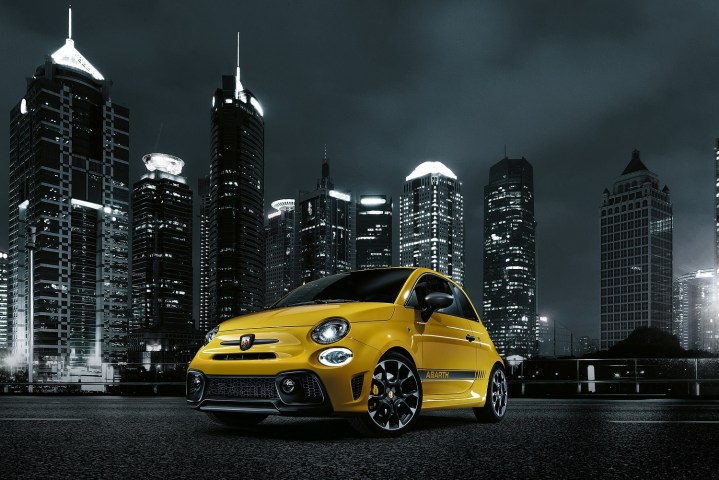
The most significant modifications are found by looking in the engine bay. The 500 Abarth — which wears the historic 595 nameplate in a handful of global markets — carries on with a turbocharged 1.4-liter four-cylinder engine, but it’s been tweaked to deliver a few extra ponies. Buyers in Europe can now choose whether they need 145, 165, or 180 horsepower. The 500 hits 62 mph from a stop in 6.7 seconds in its most powerful tune.
Front-wheel drive remains the only configuration available, but buyers worried about torque steer can order a mechanical limited-slip differential. A five-speed manual transmission comes standard, and a sequential gearbox controlled by shift paddles is offered at an extra cost. Bigger brakes and comprehensive suspension updates make the Abarth handle much better than the stock 500 both on and off the track.

When viewed from the outside, the face-lifted 500 Abarth immediately stands out from the outgoing model thanks to a new front bumper with bigger intakes that direct more cooling air to the engine compartment. It also receives new-look LED daytime running lights borrowed from the standard 500, redesigned headlights, body-colored inserts in the tail lamps, and a new air diffuser integrated into the rear bumper.
Abarth promises the updates extend to the cabin, though we’ll have to take the company’s word for it because official pictures haven’t been published yet. The company explains it has added the latest generation of its touchscreen-based Uconnect infotainment system all across the board, as well as Alcantara and carbon fiber accents to select trim levels.
Read more: Fiat’s Abarth-badged 124 Spider arrives with the same engine as the standard model
The revised Fiat 500 Abarth will go on sale in Europe in the coming months, and pricing information will be published right when dealers open the order book. We haven’t seen the updated 500 on our shores yet, so there’s no reason to assume the revised Abarth model is coming any time soon.



